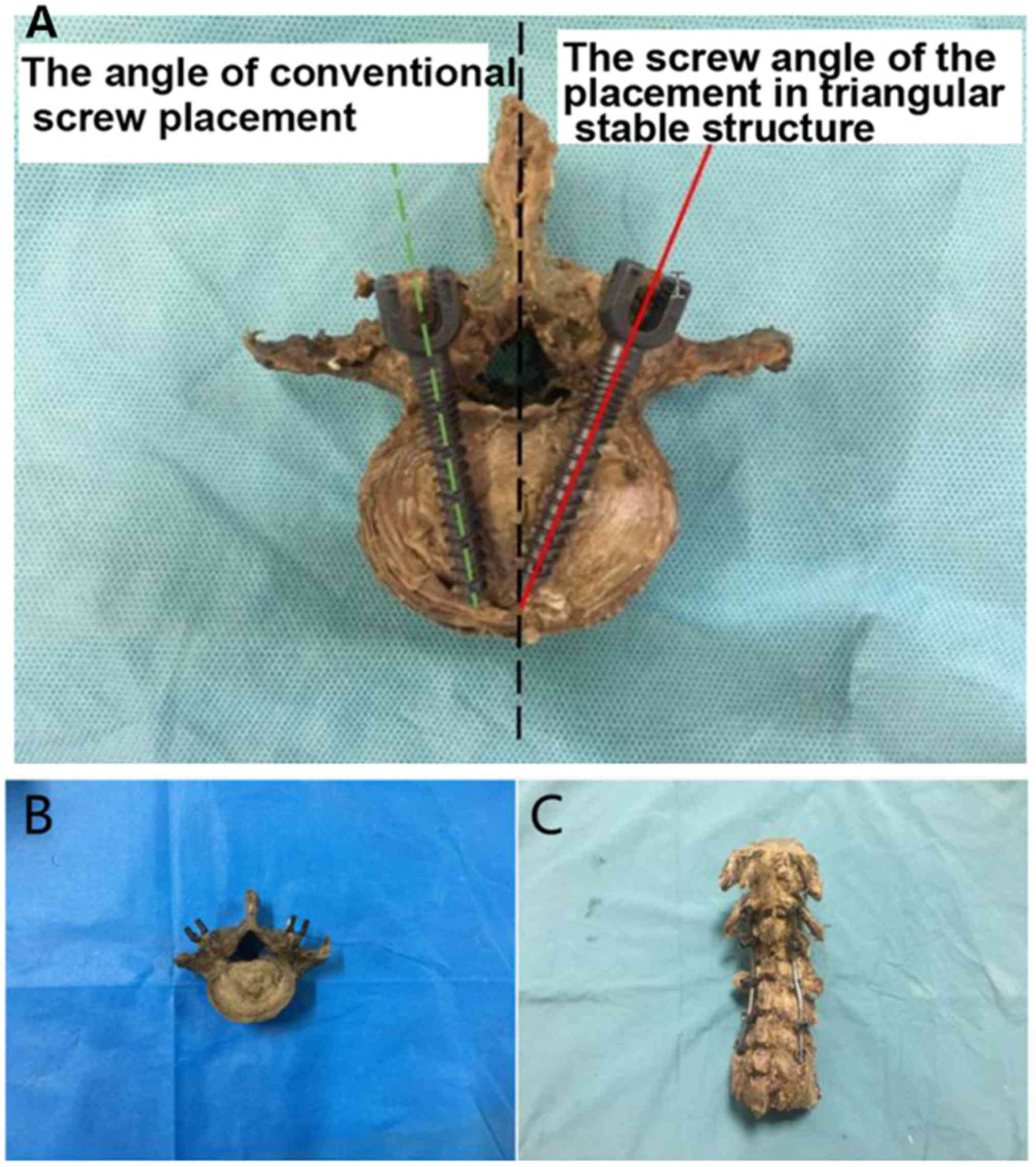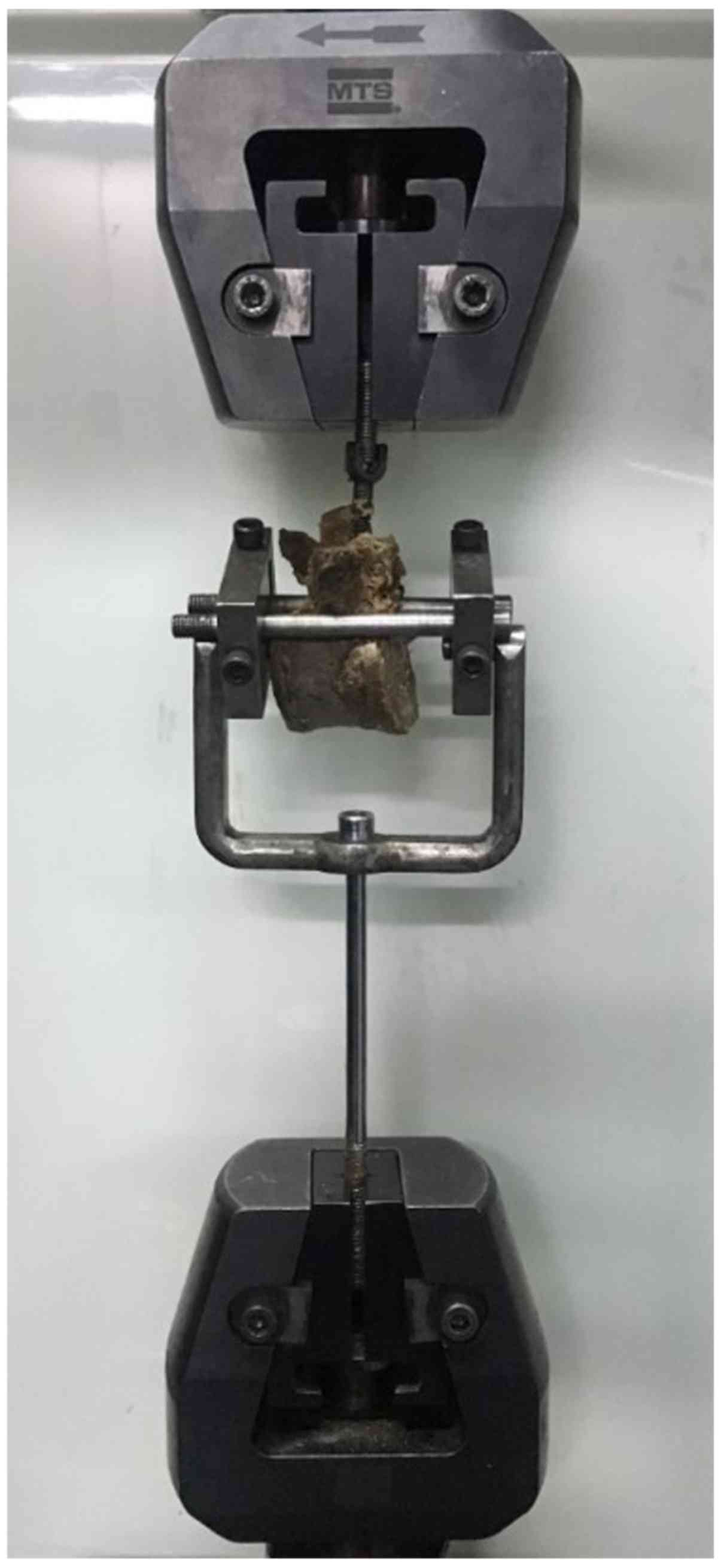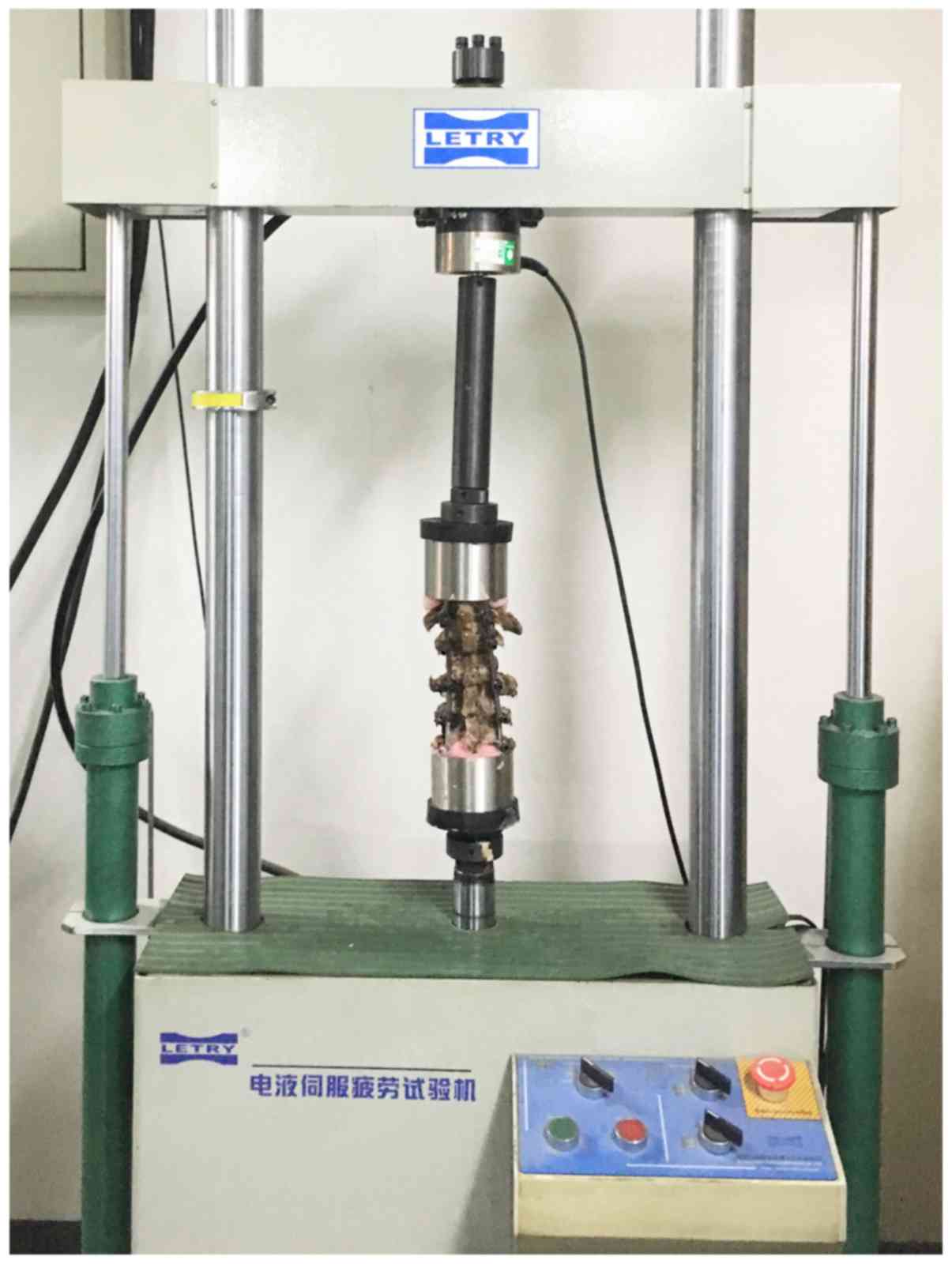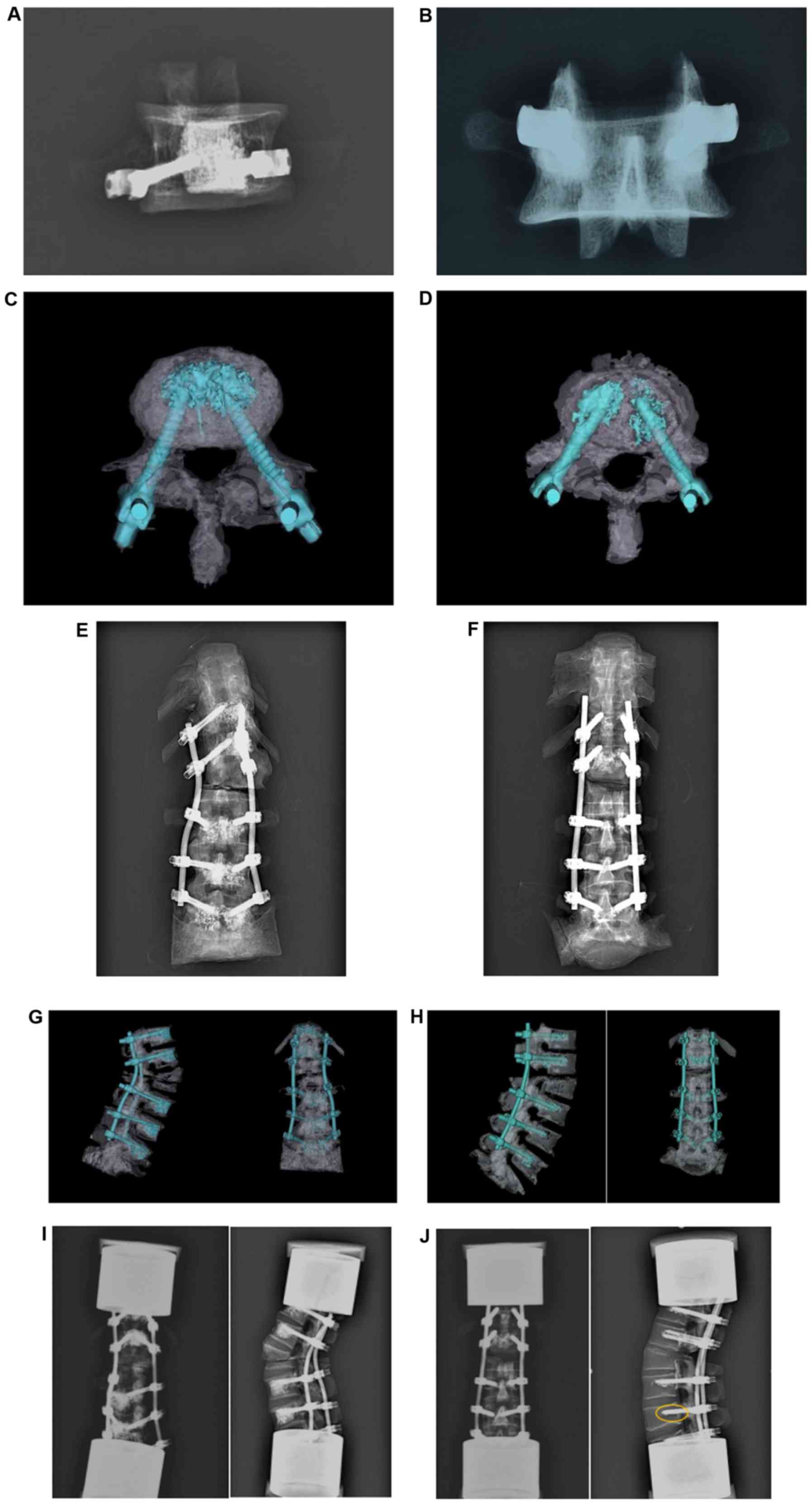|
1
|
Bernhardt M, Swartz DE, Clothiaux PL,
Crowell RR and White AA III: Posterolateral lumbar and lumbosacral
fusion with and without pedicle screw internal fixation. Clin
Orthop Relat Res. 284:109–115. 1992.PubMed/NCBI
|
|
2
|
Wray S, Mimran R, Vadapalli S, Shetye SS,
McGilvray KC and Puttlitz CM: Pedicle screw placement in the lumbar
spine: Effect of trajectory and screw design on acute biomechanical
purchase. J Neurosurg Spine. 22:503–510. 2015.PubMed/NCBI View Article : Google Scholar
|
|
3
|
La Maida GA, Luceri F, Gallozzi F, Ferraro
M and Bernardo M: Complication rate in adult deformity surgical
treatment: Safety of the posterior osteotomies. Eur Spine J. 24
(Suppl 7):879–886. 2015.PubMed/NCBI View Article : Google Scholar
|
|
4
|
Galbusera F, Volkheimer D, Reitmaier S,
Berger-Roscher N, Kienle A and Wilke HJ: Pedicle screw loosening: A
clinically relevant complication? Eur Spine J. 24:1005–1016.
2015.PubMed/NCBI View Article : Google Scholar
|
|
5
|
Law M, Tencer AF and Anderson PA:
Caudo-cephalad loading of pedicle screws: Mechanisms of loosening
and methods of augmentation. Spine. 18:2438–2443. 1993.PubMed/NCBI View Article : Google Scholar
|
|
6
|
Chao KH, Lai YS, Chen WC, Chang CM,
McClean CJ, Fan CY, Chang CH, Lin LC and Cheng CK: Biomechanical
analysis of different types of pedicle screw augmentation: A
cadaveric and synthetic bone sample study of instrumented vertebral
specimens. Med Eng Phys. 35:1506–1512. 2013.PubMed/NCBI View Article : Google Scholar
|
|
7
|
Higashino K, Kim JH, Horton WC and Hutton
WC: A biomechanical study of two different pedicle screw methods
for fixation in osteoporotic and nonosteoporotic vertebrae. J Surg
Orthop Adv. 21:198–203. 2012.PubMed/NCBI View Article : Google Scholar
|
|
8
|
Hamasaki T, Tanaka N, Kim J, Okada M, Ochi
M and Hutton WC: Pedicle screw augmentation with polyethylene tape:
A biomechanical study in the osteoporotic thoracolumbar spine. J
Spinal Disord Tech. 23:127–132. 2010.PubMed/NCBI View Article : Google Scholar
|
|
9
|
Tsai KJ, Murakami H, Horton WC, Fei Q and
Hutton WC: Pedicle screw fixation strength: A biomechanical
comparison between 4.5-mm and 5.5-mm diameter screws in
osteoporotic upper thoracic vertebrae. J Surg Orthop Adv. 18:23–27.
2009.PubMed/NCBI
|
|
10
|
Becker S, Chavanne A, Spitaler R, Kropik
K, Aigner N, Ogon M and Redl H: Assessment of different screw
augmentation techniques and screw designs in osteoporotic spines.
Eur Spine J. 17:1462–1469. 2008.PubMed/NCBI View Article : Google Scholar
|
|
11
|
Lei W and Wu Z: Biomechanical evaluation
of an expansive pedicle screw in calf vertebrae. Eur Spine J.
15:321–326. 2006.PubMed/NCBI View Article : Google Scholar
|
|
12
|
Liu D, Wu ZX, Gao MX, Wan SY, Shi L, Fu
SC, Wang J and Lei W: A new method of partial screw augmentation in
sheep vertebrae in vitro: Biomechanical and interfacial evaluation.
J Spinal Disord Tech. 24:318–324. 2011.PubMed/NCBI View Article : Google Scholar
|
|
13
|
Wan SY, Lei W, Wu ZX, Lü R, Wang J, Li B,
Fu SC and Zhan C: Micro-CT evaluation and histological analysis of
screw-bone interface of expansile pedicle screw in osteoporotic
sheep. Zhonghua Wai Ke Za Zhi. 45:1271–1273. 2007.(In Chinese).
PubMed/NCBI
|
|
14
|
Hao YX, Wu ZX and Yang Z: The clinical
application of expandable pedicle screws in the short segment
lumber fusion surgery in osteoporosis patients. Zhongguo Ji Zhu Ji
Sui Za Zhi. 27:136–141. 2017.(In Chinese).
|
|
15
|
Liu D, Shi L, Lei W, Wei MQ, Qu B, Deng SL
and Pan XM: Biomechanical comparison of expansive pedicle screw and
polymethylmethacrylate-augmented pedicle screw in osteoporotic
synthetic bone in primary implantation: An experimental study. Clin
Spine Surg. 29:E351–E357. 2016.PubMed/NCBI View Article : Google Scholar
|
|
16
|
Kiner DW, Wybo CD, Sterba W, Yeni YN,
Bartol SW and Vaidya R: Biomechanical analysis of different
techniques in revision spinal instrumentation: Larger diameter
screws versus cement augmentation. Spine. 33:2618–2622.
2008.PubMed/NCBI View Article : Google Scholar
|
|
17
|
Frankel BM, D'Agostino S and Wang C: A
biomechanical cadaveric analysis of
polymethylmethacrylate-augmented pedicle screw fixation. J
Neurosurg Spine. 7:47–53. 2007.PubMed/NCBI View Article : Google Scholar
|
|
18
|
Moore DC, Maitra RS, Farjo LA, Graziano GP
and Goldstein SA: Restoration of pedicle screw fixation with an in
situ setting calcium phosphate cement. Spine. 22:1696–1705.
1997.PubMed/NCBI View Article : Google Scholar
|
|
19
|
Renner SM, Lim TH, Kim WJ, Katolik L, An
HS and Andersson GB: Augmentation of pedicle screw fixation
strength using an injectable calcium phosphate cement as a function
of injection timing and method. Spine. 29:E212–E216.
2004.PubMed/NCBI View Article : Google Scholar
|
|
20
|
Chiang CK, Wang YH, Yang CY, Yang BD and
Wang JL: Prophylactic vertebroplasty may reduce the risk of
adjacent intact vertebra from fatigue injury: An ex vivo
biomechanical study. Spine. 34:356–364. 2009.PubMed/NCBI View Article : Google Scholar
|
|
21
|
Kebaish KM, Martin CT, O'Brien JR, LaMotta
IE, Voros GD and Belkoff SM: Use of vertebroplasty to prevent
proximal junctional fractures in adult deformity surgery: A
biomechanical cadaveric study. Spine J. 13:1897–1903.
2013.PubMed/NCBI View Article : Google Scholar
|
|
22
|
Tan JS, Singh S, Zhu QA, Dvorak MF, Fisher
CG and Oxland TR: The effect of cement augmentation and extension
of posterior instrumentation on stabilization and adjacent level
effects in the elderly spine. Spine. 33:2728–2740. 2008.PubMed/NCBI View Article : Google Scholar
|
|
23
|
Xu G, Fu X, Du C, Ma J, Li Z and Ma X:
Biomechanical effects of vertebroplasty on thoracolumbar burst
fracture with transpedicular fixation: A finite element model
analysis. Orthop Traumatol Surg Res. 100:379–383. 2014.PubMed/NCBI View Article : Google Scholar
|


















